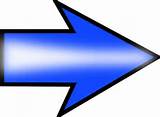It turned
out, however, that this so-influential assertion had been
based on incorrect information supplied to Aldington by
Lawlor (and was later specifically refuted by political
scientist Don Rawson in his 1968 Dissent article
on political violence in Australia).
When Aldington originally opened the correspondence with
Lawlor (via a mutual friend, expatriate Australian journalist
Alastair Kershaw) it was because he had reason to believe
that Lawrence had encountered something sinister
in Australia in 1922 - something reflected in one of the
final sentences in the novel:
|
It was as if the silvery freedom suddenly
turned, and showed the scaly back of a reptile, and
the horrible paws. |
(This "quote" appeared as above in the original
Seltzer and Secker, and later Heinemann/Viking editions
of Kangaroo. However, in the wider-circulating
Penguin edition the last word - from 1950 onwards - was
changed from "paws" to "jaws". The
correct word is "paws", which is how it appears
in the holograph manuscript. No doubt the Penguin editor
could not see how a reptile could have paws, and so gave
it "jaws" instead...a bad error, given - as
we shall soon see - the significance of the "quote",
and who this scaly animal was intended to represent [take
note again, in this context, the cover-illustration above,
with its blood-encrusted paws].)
Aldington had started the exchange with Lawlor in the
belief that Kangaroo's secret-army plot might indeed
have been based on fact. That was the reason he wrote
to him, after obtaining Lawlor's address from their mutual
friend Kershaw in France.
His suspicions, Aldington explained in an early letter
to Lawlor, had been aroused when he was staying with Lawrence
at Port-Clos on l'île de Bréhat in the Mediterranean
in 1928.
Several naval officers from Toulon had come to the island
asking about Lawrence, who insisted on departing the island
forthwith.
Aldington got the distinct impression that Lawrence was
afraid of something. (Aldington's subsequent curiosity
about Lawrence's behaviour could have stemmed from something
Lawrence told him during or following this incident.)
In his first letter to Lawlor, Aldington wrote: "If
that spy scene between Somers and Jack is invented I should
be surprised. There is real rage in it, which I don't
think Lorenzo could have worked up over an imaginary episode."
The "spy scene" is a reference to the "Jack
Slaps Back" chapter in Kangaroo when the secret-army
figure Jack Callcott accuses the Lawrence-figure Somers
of spying on his organisation ("You didn't try drawing
us out? I should say that you did."), telling him
that they wanted "some sort of security" that
he would "keep quiet" before they would allow
him to leave Australia. (See below for the full text of
that "spy scene".)
This was shortly after the fictional secret-army leader
Cooley had himself threatened Somers with severe retribution
- death in fact - if he divulged anything about what he
had learnt in Sydney.
